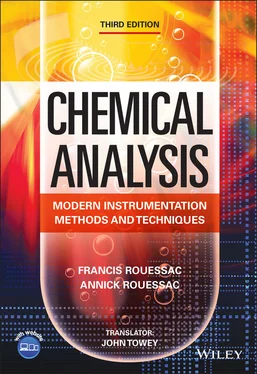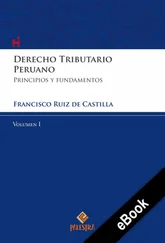7 The best‐known method for estimating the hold‐up time, tM, consists of measuring the retention time of a compound not retained on the column. Described here is another method for calculating the hold‐up time, which involves the relationship used in establishing retention factors. Knowing that for a homologous series of organic compounds if the column temperature is constant, we can write: (where tR represents the total retention time of a compound having n atoms of carbon, while a and b are constants that depend upon the type of solute and the stationary phase chosen).Recall the chromatographic parameters for which it is essential to know the hold‐up time tM. Which compound is used in general to determine tM?Calculate tM from the following experiment, employing the method above: a mixture of linear alkanes, possessing six, seven and eight atoms of carbon, is injected into the chromatograph. The retention times for these compounds are respectively, 271 s, 311 s, and 399 s, at a constant temperature of 80°C (column length 25 m, ID = 0.2 mm, df = 0.2 μm and a polysiloxane‐based stationary phase).If the Kovats index for pyridine on squalane is 695, what is the McReynolds constant of this compound on the column in question, if it is known that under the conditions of the experiment, its retention time is 346 s?
8 In a GC experiment, a mixture of n‐alkanes (up to n carbon atoms, where n represents a variable number) and 1‐butanol (CH3CH2CH2CH2OH) is injected onto a column maintained at a constant temperature and whose stationary phase is of the dimethylpolysiloxane type. The equation of the Kovats straight line derived from the chromatogram is: (where is expressed in seconds).The adjusted retention time of butanol is 168 s. If it is known that the retention index for butanol on a squalane column is 590 s, then deduce its corresponding McReynolds constant on this column.
9 We study a chromatogram obtained under the following conditions: Column: DB‐Wax, L= 30 m; ID = 0.321 mm; df = 0.25 μm; oven T = 210°C; mobile phase: H2, u = 50 cm/s; volume injected 0.2 μl; detector: FID, T = 220°C.The chromatogram has three peaks with the following characteristics:peak 1: tR1 = 1.01 min.; δ = 0.151 min.peak 2: tR2 = 1.95 min.; δ = 0.0277 min.peak 3: tR3 = 2.01 min.; δ = 0.0284 min.Calculate the dead time of the column. What can we conclude from this?From this, deduce the mobile phase flow rate in ml/min.Calculate the column phase ratio.Calculate the HETP (H) for peak No.2.Calculate retention factors k for peaks 2 and 3.From this, deduce the distribution coefficients K of the two corresponding compounds.Calculate the selectivity factor α between compounds 2 and 3.Calculate the resolution between these two peaks. Is it enough? What could be a solution to improve the resolution?Kovats retention indexes for octane, toluene, and methyl pentanoate on this same column are respectively 800, 850, and 985. Classify these three solutes by increasing retention times on this stationary phase.What is the polarity of this stationary phase? Justify your answer.
1 We consider that volume V, leaving the column every second, is equal to the internal volume of the column over length ū. The section of the column is πID2/4 and thus V = ūπID2/4. Flow rate D expressed in ml/min (if ū and ID are in cm) is then D = 60V. If we choose to express ID in mm, we write D = 60ūπ(0.1)2 ID 2/4, or D = 0.47ūID 2.
2 The thermodynamic study of a chemical equilibrium leads to the formula: or or If we assume that enthalpy and entropy variations are constant in the temperature range in question and if we switch to log, we can write log k = ‐ A + B/T if we assume the entropy variation < 0 (loss of disorder when the solute is fixed on the stationary phase) and the enthalpy variation < 0 (exothermic reaction).Coelution => k1 = k2, hence log k1 = log k2 and thus T1 = 421 K or t = 148°CFor T < T1 , k2 > k1, therefore 2 elutes after 1.If α = 2, this means that k2 / k1 = 2, or log k2 ‐ log k1 = log 2, and thus T = 343 K.T = 423 K thus k1 = 0.163 and k2 = 0.161; K1 = 40.73 and K2 = 40.16.
3 The cancelation of the first derivative of H = f(u) enables us to find u corresponding to Hmin, thus u = 36.9 mm/s; Hmin = 0.295 mm.Nmax = L/Hmin = 40,674 plates.We are looking for the value of u that gives N= 0.95Nmax or N =38,641 theoretical plates, thus H= 0.310 mm; u = 50.2 mm/s or u = 27.3 mm/s.
4 The order of elution follows that of the increasing boiling points. The alkenes, which are more polar than the corresponding alkanes, are less retained, which is expected from a nonpolar column.α = k2/k: α = 1.12 (at –35°C), α = 1.11 (at 25°C) and α = 1.09 (at 40°C).Since the column is the same, the retention time decreases following the reduction in the partition factor K = CS/CM with temperature.N = 138,493 theoretical plates.Hmin theo = 0.113 mm.
5 L (m)a = √LtR (min)tR/LRR/a153.873.70.252.050.53305.487.50.252.910.53607.7515.30.254.150.53tR is proportional to length.R is proportional to .δ proportional to and N is proportional to L.δ = 0.0568 min, N60 = 148,166 plates.N30 = 74,083 plates and N15 = 37,041 plates.
6 tM = L/u = 750 s = 12.5 min. For methane, k = 0, therefore K = 0 and cannot be calculated.The higher K is, the more solute is retained and the larger the absolute value of ∆ is. Therefore, peak 10 → 2,4 dimethyl pentane, 11 → benzene, 12 → 2‐methylhexane, 13 → 2,3 dimethyl pentane and 14 → 3‐methyl hexane.N = 5.54 (tR/δ)2 = 133,126 plates.d.β = ID/4df = 250. , K = k ∙ β = 853. These are very close values.
7 Neff , k, α; GC: methane.The experiment described helps us write three equations for three unknowns, tM, a, and b: (1) log(271 – tM) = 6a + b; (2) log(311 ‐ tM) = 7a + b; (3) log (399 ‐ tM) = 8a + b, thus tM = 237.7 s.Ik = 749. The McReynolds constant for pyridine on this stationary phase is 54.
8 The Kovats index of butanol is thus 645. Its McReynolds constant is: 645 – 590 = 55.
9 tM = L/u = 3,000/50 = 60 s, i.e. 1 minute. Peak No.1 probably corresponds to the solvent peak.D = VM/tM = π ∙ L ∙ (ID)2/4 tM = 40.46 mm3∙s−1, i.e. 2.4 ml/min.β = (ID)/4df = 321/(4 x 0.25) = 321.HETP for peak No.2: H = L/N with N = 5.54tR 2 /δ 2 = 27,555 plates => H = 1.09 mm.k = (tR ‐ tM)/tM k2 = 0.93 and k3 = 0.99.K = k ∙ β, thus K2 = 0.93 × 321 = 298.5; K3 = 0.99 × 321 = 317.8.α2‐3 = k3 /k2 = 1.06.R2‐3 = 1.18(tR3 – tR2)/(δ2 + δ3) = 1.2. The resolution between two peaks for a good separation must be at least 1.5. The two peaks are therefore not well separated. To improve this separation, retention times must be increased by reducing either the carrier gas flow rate or the oven temperature.The higher the Kovats index is, the longer the retention time. Therefore, tR values are in the following order: octane < toluene < methyl pentanoate.These retention times are in the order of growing polarity of the analytes; therefore, this is a polar column.
Конец ознакомительного фрагмента.
Текст предоставлен ООО «ЛитРес».
Прочитайте эту книгу целиком, на ЛитРес.
Безопасно оплатить книгу можно банковской картой Visa, MasterCard, Maestro, со счета мобильного телефона, с платежного терминала, в салоне МТС или Связной, через PayPal, WebMoney, Яндекс.Деньги, QIWI Кошелек, бонусными картами или другим удобным Вам способом.




![Евгений Матерёв - Музеи… или вдохновляющая музыка The Chemical Brothers [litres самиздат]](/books/437288/evgenij-materev-muzei-ili-vdohnovlyayuchaya-muzyka-th-thumb.webp)







